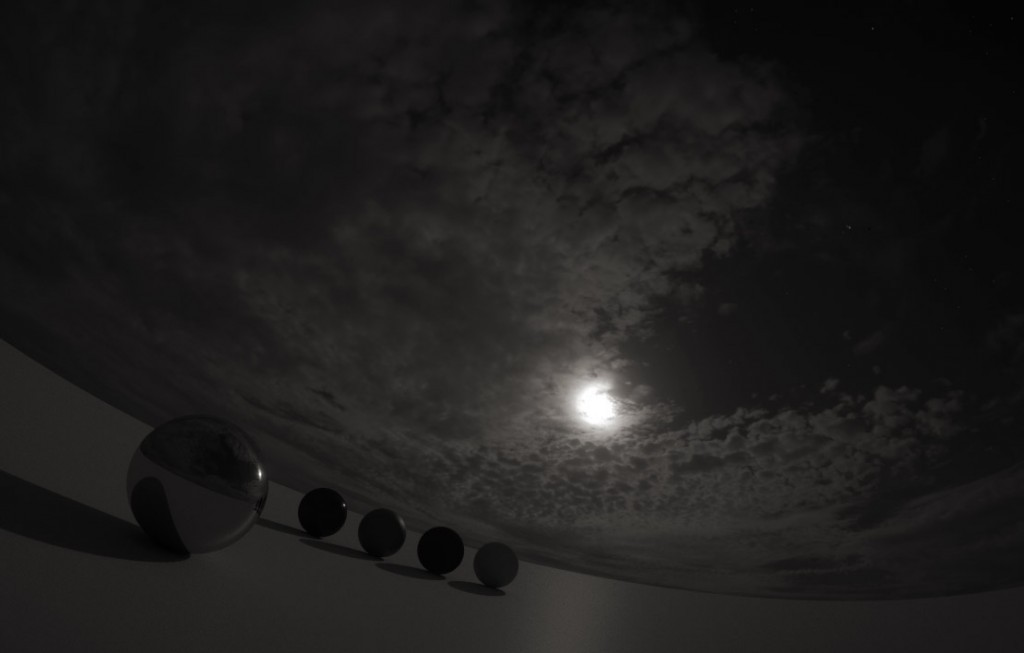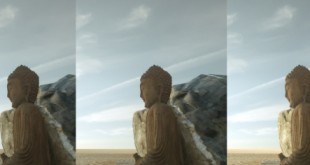Quite often I get people asking me about HDRI night sky maps, why my Night Sky collections aren’t HDR, why aren’t there many available, etc. I often answer that without a moon, a night sky isn’t naturally a HDRI. The brightness difference from the black night sky and the stars is within the range of a LDR image. Maybe, maybe if you go out into the desert and get some night shots, you may get some stars noticeably brighter, I haven’t tried.
I did include a moon HDRI as part of both Night Skies collections (shot through a telescope), in case you’d like to copy/paste that moon image in and make a HDRI night sky. However another option I was just testing within Blender Octane, is simply using a day HDRI sky, turning down the exposure/power and using that for a night sky. You’ll never get a nicely exposed, visible moon, but you’ll often get an overexposed blown out moon anyway with a long exposure. The contrast between the sun and a bright blue sky may even compare to a moon and a black sky, I’m not sure! Ie, if you turn down the exposure on an HDRI sky, it looks similar to a moon lit night sky.
Day to Night HDRI Sky Test Render
Here’s a test render I did in Blender Octane, using a daytime HDR sky frame from our Time-Lapse Stormy01 sky:

I know this is a pretty dark render, so it may appear wayyyy dark on some monitors.
You can alter the sky within your renderer or Photoshop – I’d start out desaturating the HDRI sky a little, maybe play with gamma, add a colour cast, and I think you’ll be well on your way to a nice moon-lit HDRI night sky. Add in a few stars for added effect.
Let me know if you’ve done anything similar, I’m keen to see a render with something more than just some test spheres!
Why not just shoot some moon-lit, night HDRIs?
To capture a night sky with a moon, some serious sacrifices need to be made – we have so little light, that very long shutter speeds are required. If we don’t want long shutter speeds, we need to use very high ISO. Both produce image artifacts like noise or star trails. Star trails generally appear after 20 seconds or so, and if we need to shoot a number of brackets for a HDRI, that generally means we will have a combined time of at least 30 seconds.
This is why I shot and included a moon in Night skies 1 and 2, so that you could use an LDR night sky and essentially copy paste that moon image into the sky at whatever size/resolution/brightness you need.
Hope you found this somewhat interesting or helpful!
–
Our night skies are available here: Night Skies 1, and Night Skies 2, and we have a wide range of HDRI sky maps if you’re keen to try ‘converting’ some into HDRI night skies. The image I used in the test render is from the HDRI Time-Lapse Sky, Stormy01.
 Hyperfocal Design
Hyperfocal Design

